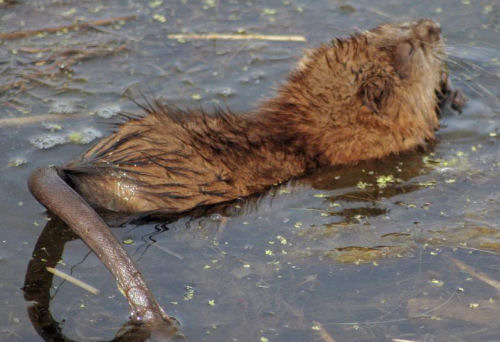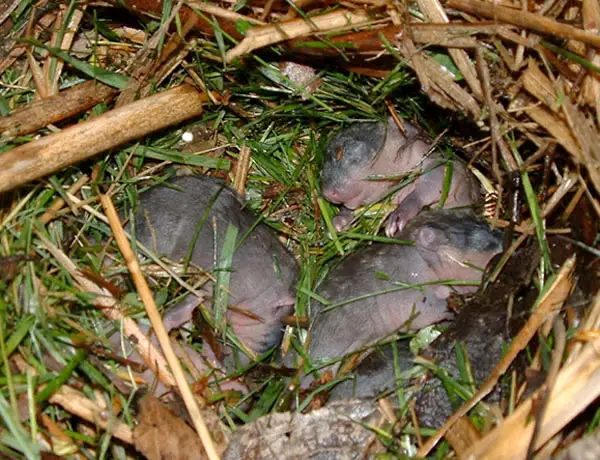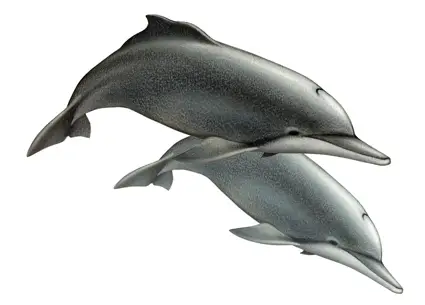Muskrat
The Muskrat is sometimes confused with a young beaver, because they have a similar appearance and swimming styles. The Muskrat can, however, be distinguished by its long, massive tail, which is covered in scales. The tail can be as long as the rest of the body, that is, 28 – 45 cm.
These animals live in most parts of North America and in 1905 a few specimen escaped captivity in the Czech Republic and they soon established a population in territories ranging from western Europe to the very eastern parts of Russia. They are not very fastidious about their surroundings and they can live near almost any water source. Biggest chances to see a Muskrat are near shallow lakes and ponds.
Muskrats are excellent swimmers and divers, their hind feet are equipped with flippers, and the massive tail serves as a steering device. On ground, however, they’re clumsy and slow and most of their movement consists of small jumps. Muskrats dig underwater tunnel systems that lead to the animal’s shelter, which is above water level. Those specimen that live in dryer areas, construct large piles of weeds, mud and reed.
These water mammals mostly feed on vegetation found in their surroundings, which is most often various plants that grow in or near water. Muskrats also enjoy berries and fruits, as well as a variety of farmland vegetation, which is why farmers are not very happy about this animal. Muskrats are classified as rodents and they rely on their sharp teeth to chop and chew hard plants and weeds. Being nocturnal animals, they only come out at dusk and feed during the night, spending daytime in their burrows.
Muskrats have an incredibly fast reproduction – each pregnancy ends with at least four newborns and up to 15 pups can be born at one time. In northern territories, the mating period lasts April through September, while in south Muskrats can mate all year round. After a gestation period of about four weeks, naked and helpless pups are born. They live in a nest in thick reed growths or other suitable places. Newborns develop fairly quickly and in two weeks they’ve fully grown fur and can swim quite well already. After two more weeks the mother drives them away from the nest and prepares for the next pregnancy.
Due to their incredible reproduction rate, Muskrats have a stable population and they have spread across most parts of the world. In some regions, this has a severe effect on the farmlands. After a population of Muskrats caused great damage to farmlands in the UK, the government started a war against these animals and in 7 years they were completely eradicated in the British Islands.




